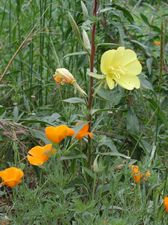
Family Issues
by
Susan
Kramer
| 1.
Sitting at a Desk Meditation - Home, Classroom, Office
2. Sitting on the Floor or Sitting Outdoors Meditation 3. Lying Down Meditation 4. Yoga Meditation 5. Meditating Anywhere While Doing Anything |
| Introduction |
| 1. Sitting at a Desk Meditation - Home, Classroom, Office |
2 - 10 minutes or more
Preparation: Sitting with your back straight in the chair, facing forward; clasp your hands and let them rest in your lap; close your eyes.
Breathe easily and evenly, in and out. Silently count each in breath as one count, and each out breath as one count, till 50 counts, or another even number.
Listen to your breath as it comes in; listen to your breath as it goes out.
Example:
Count 1: breathe in
Count 2: breathe out
Count 3: breathe in
Continue…
To finish, take a final deep
breath in, slowly let it out, open your eyes.
| 2. Sitting on the Floor or Sitting Outdoors Meditation |
2 - 10 minutes or more
Preparation: Sit on the grass or at the beach, or if indoors, then on a carpet, folded blanket, or pillow on the floor with back and head erect; clasp your hands and let them rest in your lap; close your eyes. If desired, sit facing a lit candle or a campfire if outdoors, and let your eyes relax but not shut tight so the candle light can still be viewed.
Breathe easily and evenly, in and out. Silently count each in breath as one count, and each out breath as one count, till 50 counts, or another even number.
Example:
Count 1: breathe in
Count 2: breathe out
Count 3: breathe in
Continue…
To finish, take a final deep
breath in, slowly let it out, open your eyes, stand up, and stretch.
| 3. Lying Down Meditation |
2-10 minutes or more
Preparation: Lying on a piece of carpet or bed, stretch out on your back; arms slightly away from body; legs comfortably apart. Close your eyes; let your body go limp.
Lying so still and relaxed, keeping your eyes closed, visualize walking onto a meadow on a warm sunny day.
In your mind, just feel yourself standing still for a moment looking around, then seeing a horse galloping along. Watch the regular rhythms of the gallops while breathing evenly in and out.
Enjoy the relaxed feeling in your own body that is lying so limply and undisturbed. Feel whole and comfortable in your resting body.
After some time, watch the
horse gallop away and begin to come back to your everyday active self by
taking a deep breath, opening your eyes, stretching out your arms and legs;
sitting up.
| 4. Yoga Meditation |
5 minutes or more
Preparation: Sit on a carpet, folded blanket, or pillow on the floor with back and head erect, eyes closed; legs folded in; hands clasped and resting in lap; eyes closed.
Begin by breathing in and out evenly without any breath retention.
While breathing evenly, listen to the sound of your breathing. This is for concentration; to help the mind wander less.
If you are very quiet and concentrated you may begin to hear the inner vibration, seemingly generated under the crown of your skull. If you hear this hum or sound of gentle rushing of water begin listening to the vibration rather than listening to your even in and out breaths.
Listening to your even breathing, or to the inner vibration, calms and centers the body-mind.
A centered body-mind becomes
a creative tool in all aspects of living.
| 5. Meditating Anywhere While Doing Anything |
Location: Anywhere
Informal meditation practice is possible anywhere at any time without anyone knowing what you are doing.
Just begin to breathe in and breathe out regularly. Listen to the breaths if it is quiet, but most importantly breathe in and out evenly. This technique brings balance into the body-mind. If angry or upset begin to practice the even breathing; it calms. If feeling anxious at school or anywhere practice a few sets of the even breathing. Remember, do not do any breath retention.
If you have the opportunity,
take a walk while evenly breathing in and out; swinging your arms back
and forth in opposition. That means, when your right foot steps forward,
your left arm swings forward. I use this practice myself each day when
out for a long walk along the canals here in Amsterdam. Master
Sivananda of Rishikesh was a yoga master and a medical doctor. He said
that walking briskly circulates the bodily hormones that give one a feeling
of well-being.
| text and garden
photo
ã 2001-2002 Susan Kramer email susan@susankramer.com web site http://www.susankramer.com |